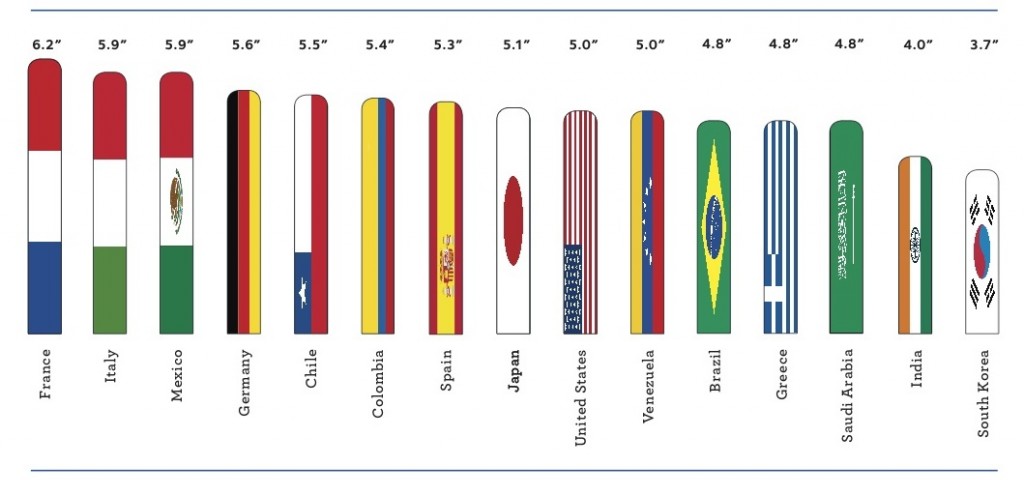For Economic Growth, Does Penis Size Matter More Than Political System?
In SuperFreakonomics Illustrated, we published this penis-flag chart in the context of a discussion about how ill-fitting condoms failed to protect men and women alike in countries including India:

How do Indian men measure up? While it isn't easy to conduct medical research on penis size, a few international studies do exist. The penis-enlargement company Andromedical compiled the available data and arrived at a ranking that shows average penis size in the countries surveyed. (Yes, several of your favorite countries will be missing.) Indian indeed ranks toward the low end. For those of you surprised to see France atop the list, it should be noted that the French data were compiled by French scholars.
The fact is that reliable penis-size data is notoriously
Using those data, Tatu Westling of the University of Helsinki has written a paper called “Male Organ and Economic Growth: Does Size Matter”? Please do take this with a sizable grain of salt:
This paper explores the link between economic development and penile length between 1960 and 1985. It estimates an augmented Solow model utilizing the Mankiw-Romer-Weil 121 country dataset. The size of male organ is found to have an inverse U-shaped relationship with the level of GDP in 1985. It can alone explain over 15% of the variation in GDP. The GDP maximizing size is around 13.5 centimetres, and a collapse in economic development is identified as the size of male organ exceeds 16 centimetres. Economic growth between 1960 and 1985 is negatively associated with the size of male organ, and it alone explains 20% of the variation in GDP growth. With due reservations it is also found to be more important determinant of GDP growth than country’s political regime type. Controlling for male organ slows convergence and mitigates the negative effect of population growth on economic development slightly. Although all evidence is suggestive at this stage, the `male organ hypothesis’ put forward here is robust to exhaustive set of controls and rests on surprisingly strong correlations.
(HT: Otto Kässi)

Comments